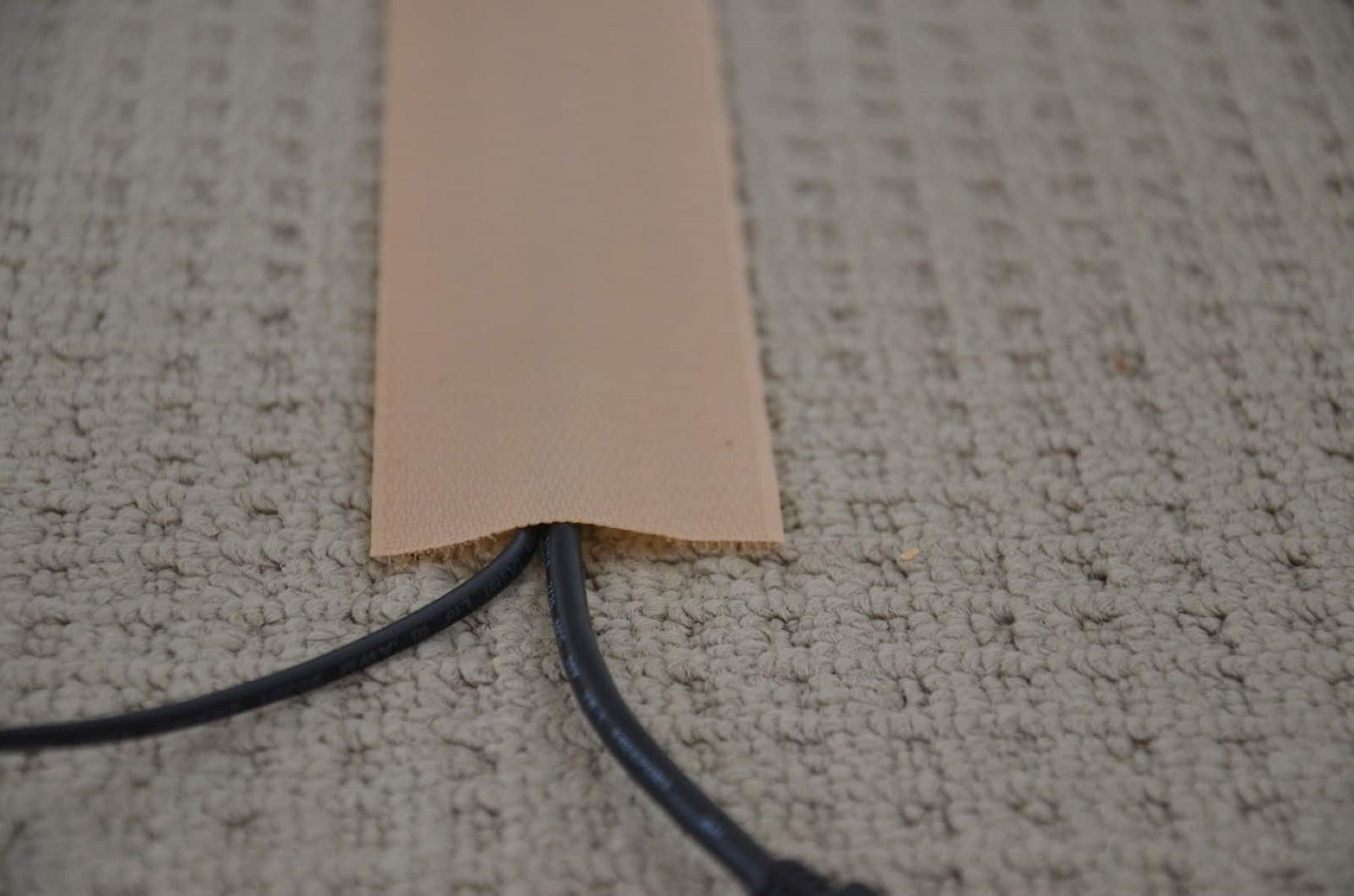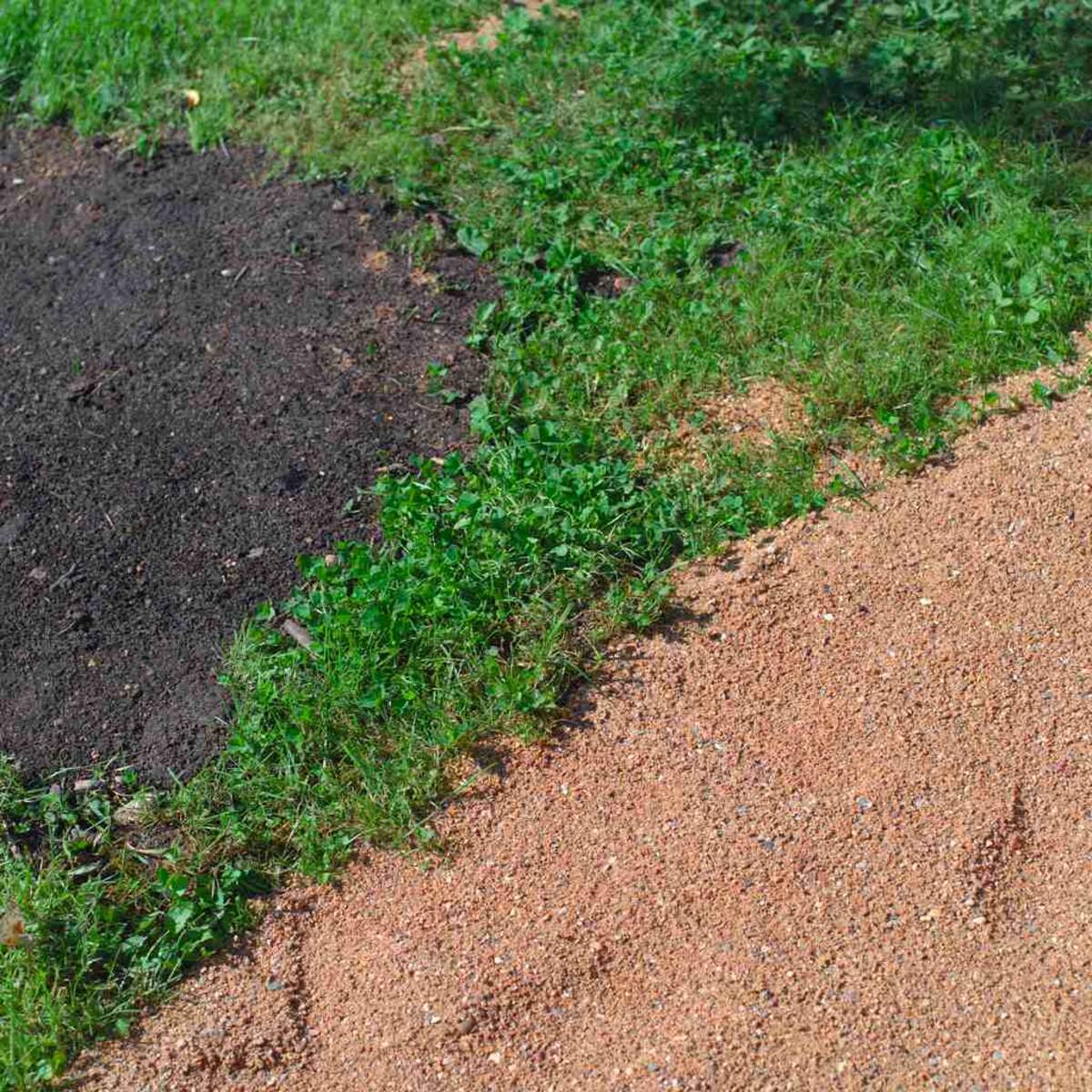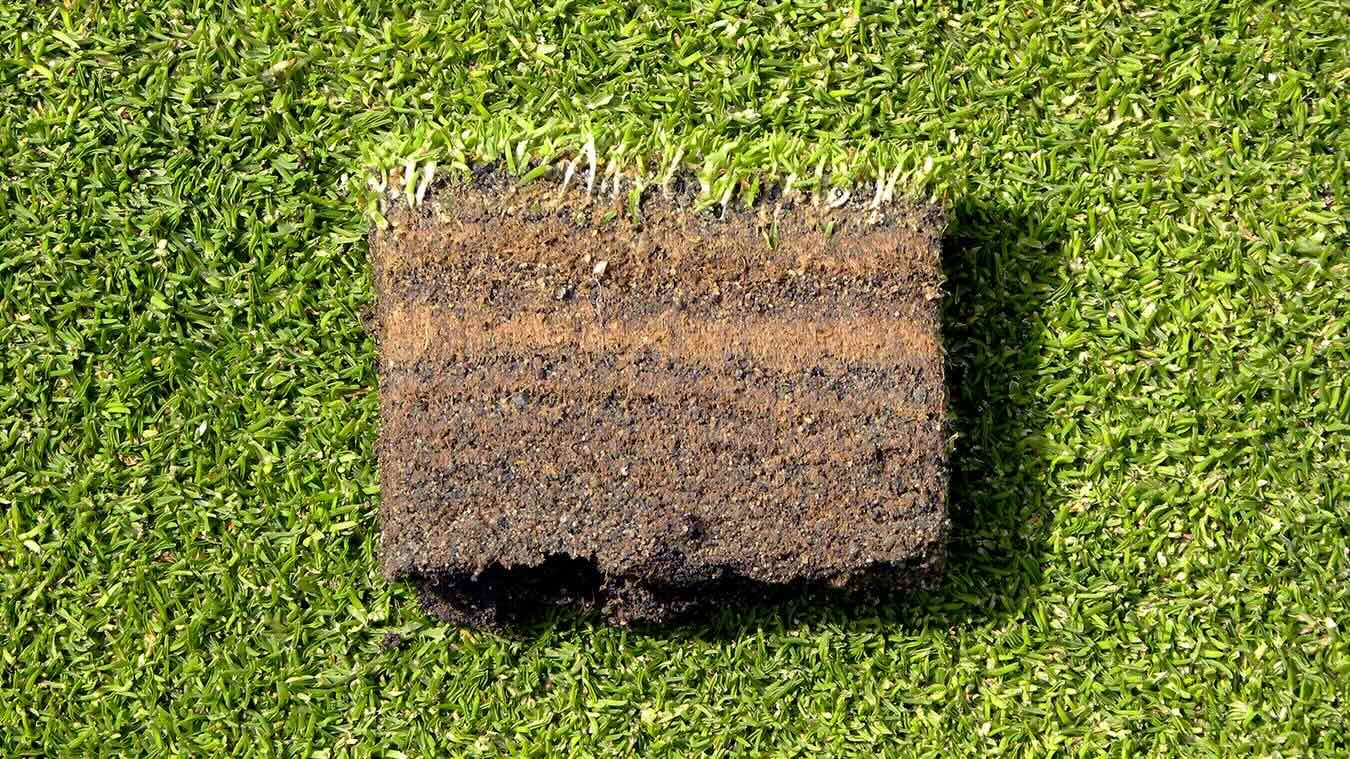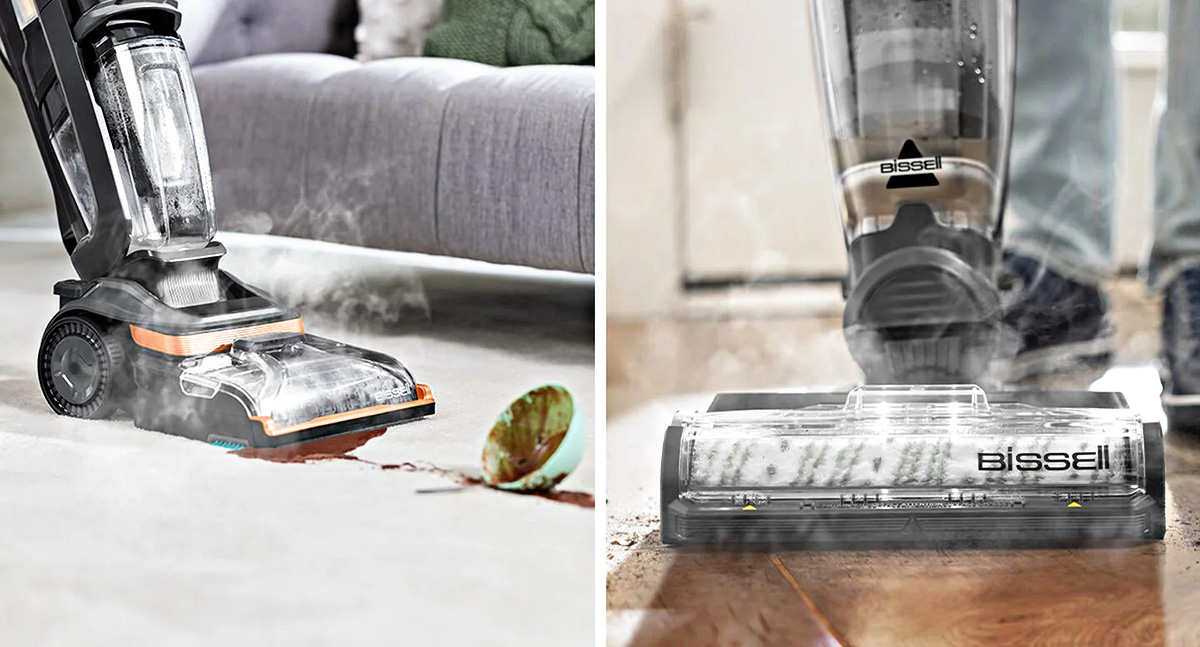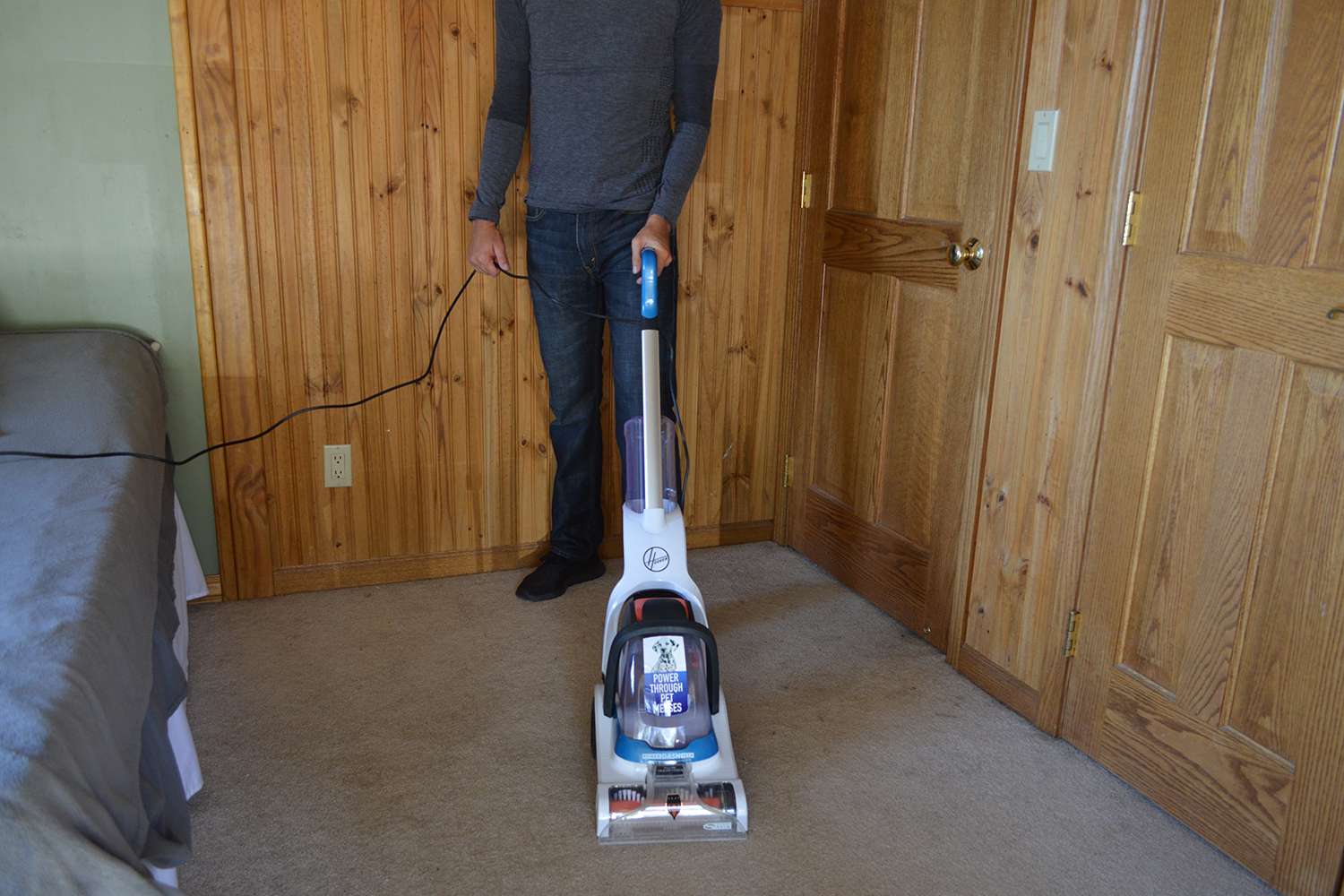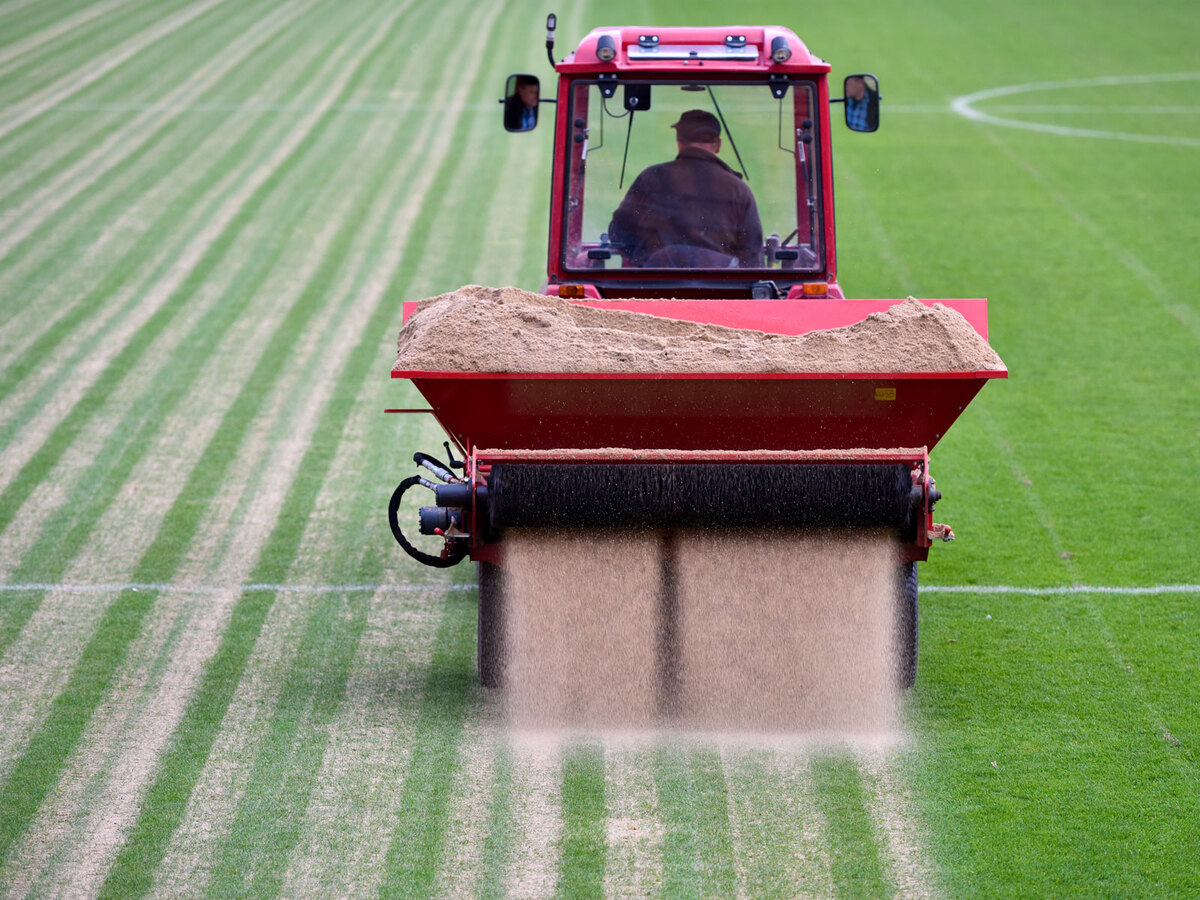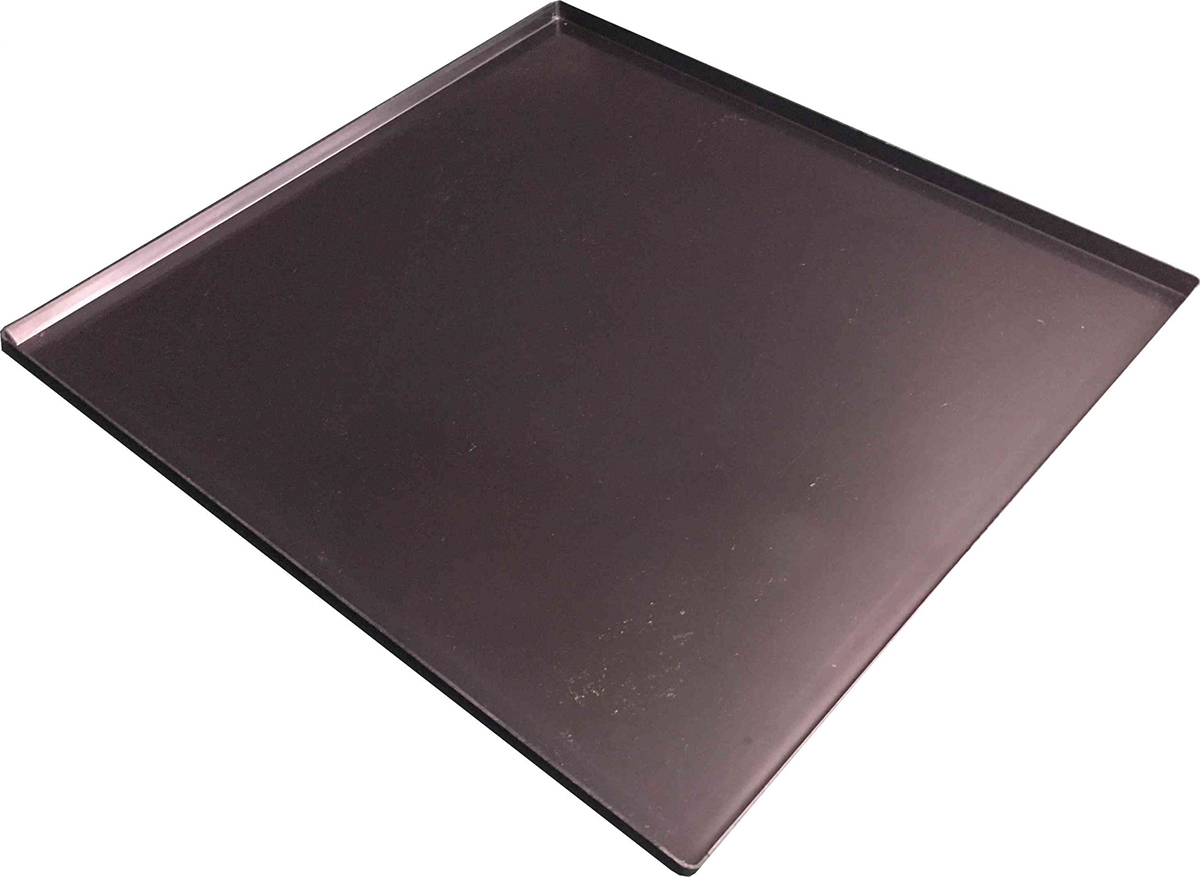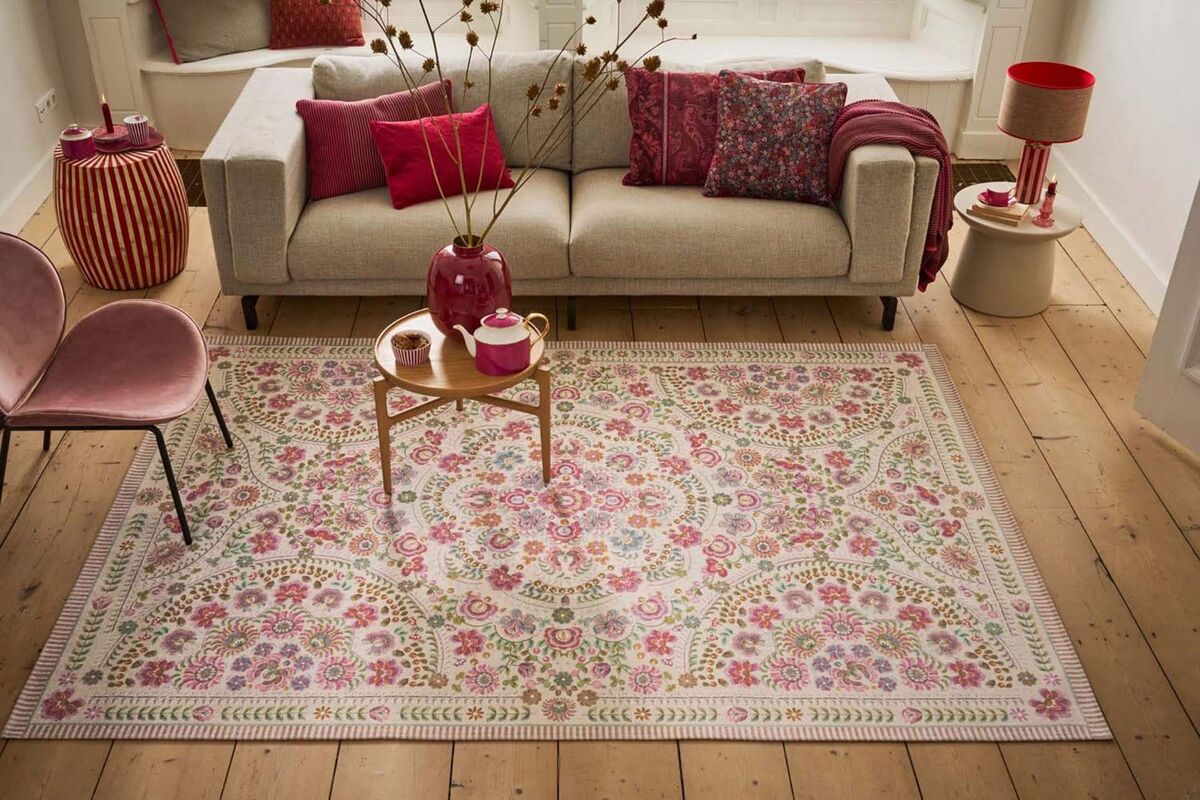

Articles
Why Is There A Sand Under My Carpet
Modified: January 9, 2024
Discover the reasons behind the presence of sand under your carpet with our informative articles. Explore expert tips and solutions to keep your floors clean and sand-free.
(Many of the links in this article redirect to a specific reviewed product. Your purchase of these products through affiliate links helps to generate commission for Storables.com, at no extra cost. Learn more)
Introduction
Have you ever wondered why there is sand under your carpet? It can be quite baffling to find a gritty layer beneath your carpet, especially if you live in an area far away from any beaches or sandy environments. But fear not, as there are a few common causes for this phenomenon. Understanding these causes can help you prevent the accumulation of sand and maintain a clean and comfortable living space.
The presence of sand under the carpet can be attributed to several factors, such as environmental conditions, construction or renovation projects, poor quality carpet installation, and inadequate cleaning and maintenance. By exploring these causes and their effects, we can gain a better understanding of how to address the issue.
Key Takeaways:
- Regular vacuuming and deep cleaning are essential to prevent sand accumulation under the carpet, maintaining a clean and pristine living space while extending the carpet’s lifespan.
- Using rugs or mats at entryways and ensuring proper carpet installation are effective strategies to minimize sand infiltration, preserving the carpet’s appearance and durability.
Read more: Why Is My Dog Licking The Carpet
Causes of Sand under the Carpet
There are several possible causes for the presence of sand under your carpet. Let’s take a closer look at each of these causes:
1. Environmental Factors: In some cases, sand particles can find their way into your home through open windows and doors. This is especially common in areas with windy climates or homes located near construction sites, deserts, or sandy landscapes. As the wind blows, it carries sand particles that can easily settle on your carpet.
2. Construction or Renovation Projects: If there has been recent construction or renovation work in your home, it’s not uncommon for sand to end up under the carpet. This can happen due to the movement of workers, tools, and materials, which can inadvertently bring in sand particles.
3. Poor Quality Carpet Installation: Improper installation of the carpet can lead to gaps or loose edges. These gaps and loose areas can act as entry points for sand to get trapped underneath the carpet. If the carpet is not securely attached to the floor, it can also shift over time, allowing sand to accumulate.
4. Inadequate Cleaning and Maintenance: Neglecting regular vacuuming and cleaning of your carpet can contribute to the buildup of sand. As dust and dirt accumulate on the carpet’s surface, sand particles can become embedded within the fibers. Over time, this can lead to a noticeable layer of sand underneath the carpet.
To prevent the accumulation of sand under your carpet, it’s essential to address these underlying causes. By taking proactive measures, you can maintain a clean and sand-free carpeted area in your home.
Environmental Factors
One of the main causes of sand under the carpet is environmental factors. These factors include windy climates, proximity to sandy landscapes, and openings in the house that allow sand to enter.
In areas with windy climates, sand particles can easily be carried by the wind and make their way into your home. Even if you live far from any sandy environments, the wind can still transport sand from nearby areas and deposit it on your carpet. Open windows, doors, or gaps in the house can serve as entry points for the sand particles.
If you live in an area close to construction sites, deserts, or beaches, the chances of sand getting into your home increase. Construction sites can create a lot of dust and sand particles that can be easily carried by the wind and find their way into your living space. Similarly, if you live in a coastal area with sandy beaches, sand can be tracked into your home on the soles of shoes or pets’ paws.
To prevent sand accumulation due to environmental factors, you can take a few precautionary measures. Keep windows and doors closed during windy days and ensure there are proper seals around them. Regularly sweep and clean the entryways to your home to minimize the amount of sand that gets brought in. Placing doormats or rugs at the entrance can help trap sand particles before they reach your carpet.
It’s also important to maintain your landscape properly if you have sandy soil nearby. This includes using ground covers, such as grass or mulch, to minimize the amount of loose sand that can be picked up by the wind and brought into your home.
By addressing these environmental factors, you can significantly reduce the amount of sand that finds its way under your carpet. This will not only help keep your carpet clean but also create a more comfortable and healthy living environment.
Construction or Renovation Projects
Another common cause of sand under the carpet is related to construction or renovation projects happening in your home. During these projects, sand particles can easily make their way onto your carpet, leading to the gritty layer you may find underneath.
Construction or renovation work often involves the movement of workers, tools, and building materials, which can inadvertently bring in sand. For example, if sand is used as part of the construction materials, it can get dispersed and settle on the carpet. Workers who are not diligent in keeping the work area clean may also track sand particles into the living space.
Additionally, the process of removing or replacing flooring, such as tiles or hardwood, can generate dust and sand as the old flooring is removed. If proper precautions are not taken, these particles can spread throughout the house and end up under the carpet.
To minimize the impact of construction or renovation projects on your carpet, it’s important to implement preventative measures. If possible, seal off the construction area with plastic sheets to prevent the spread of dust and sand. Communicate with the contractors or workers to emphasize the importance of cleanliness and provide mats or shoe covers at the entrance to keep sand particles from being tracked into other areas of the house.
Once the construction or renovation work is complete, thoroughly clean the affected areas to remove any remaining sand particles. This may involve vacuuming, sweeping, or using a carpet cleaner to ensure that all traces of sand are eliminated.
By being proactive and taking these precautions, you can minimize the impact of construction or renovation projects on your carpet and prevent the buildup of sand underneath. This will help maintain the cleanliness and longevity of your carpeted areas.
Poor Quality Carpet Installation
Poor quality carpet installation is another factor that can contribute to the presence of sand under the carpet. When carpets are not installed properly, gaps, loose edges, or inadequate adhesive can create spaces where sand can easily infiltrate.
If the carpet is not properly stretched and secured to the floor during installation, it can become prone to shifting and movement. This movement can dislodge sand particles from the carpet fibers and allow them to settle underneath. Additionally, if the edges of the carpet are not properly secured or if there are gaps between the carpet and the walls, sand can find its way into these spaces and accumulate over time.
In some cases, poor quality adhesive or improper use of adhesive during installation can contribute to the issue. If the carpet is not adequately bonded to the floor, it can easily shift and create gaps where sand can enter. Furthermore, if the adhesive used is of low quality or incompatible with the carpet material, it may deteriorate over time, leading to loosening of the carpet and the potential for sand accumulation.
To prevent sand from accumulating under the carpet due to poor installation, it is crucial to ensure that you hire a reputable and experienced carpet installer. Professional installers can properly stretch and secure the carpet, minimizing the chances of it shifting or creating gaps. They will also use appropriate adhesive that is compatible with your specific carpet material.
If you suspect that your carpet was poorly installed, it’s best to consult with a professional to assess the situation and make any necessary repairs. They can re-stretch the carpet, secure loose edges, and address any gaps where sand might be entering. Taking these steps can help alleviate the issue and prevent further sand accumulation.
By investing in quality carpet installation, you can minimize the chances of sand settling under your carpet and ensure a long-lasting and comfortable flooring solution for your home.
Read more: Why Is My Dog Eating The Carpet
Inadequate Cleaning and Maintenance
Inadequate cleaning and maintenance practices can also contribute to the accumulation of sand under the carpet. When carpets are not regularly cleaned and maintained, dust, dirt, and sand particles can embed themselves within the carpet fibers and eventually settle underneath.
Regular vacuuming is essential to remove loose dirt and particles from the carpet surface. However, if this task is neglected, the debris can become trapped within the carpet, creating a layer of sand underneath. This is especially true in high-traffic areas where dirt and sand are more likely to be tracked in.
In addition to vacuuming, periodic deep cleaning of your carpets is crucial to maintain their cleanliness and prevent the buildup of sand and other debris. Deep cleaning methods, such as steam cleaning or shampooing, can help extract embedded particles from deep within the carpet fibers. Neglecting to perform these deep cleaning routines can lead to the compaction of dirt and sand over time, making it more difficult to remove.
Furthermore, spills and stains should be promptly addressed to prevent them from trapping dirt and sand particles. If these are left untreated, they can create patches of hardened residue that can attract more dirt and sand, exacerbating the problem.
To prevent sand accumulation due to inadequate cleaning and maintenance, establish a regular cleaning routine for your carpets. Vacuum at least once a week, paying extra attention to high-traffic areas. Additionally, schedule periodic deep cleaning sessions to thoroughly remove any embedded particles.
It is also important to address spills and stains immediately. Blot the affected area with a clean cloth or use appropriate carpet cleaning solutions to prevent residues from forming. Regularly inspect your carpet for any signs of wear, damage, or loose edges, as these can contribute to the accumulation of sand.
By prioritizing regular cleaning and maintenance of your carpets, you can prevent the buildup of sand and other debris, ensuring a clean and comfortable living environment.
Effects of Sand under the Carpet
The presence of sand under the carpet can have several negative effects on both the carpet itself and the overall indoor environment. Let’s explore some of these effects:
1. Increased Wear and Tear on Carpet Fibers: Sand particles act as abrasive agents that can wear down the carpet fibers over time. As people walk on the carpet, the sand particles grind against the fibers, causing them to become frayed, flattened, or damaged. This can result in a worn and unattractive appearance, reducing the lifespan of the carpet.
2. Damage to Carpet Padding: Sand can also work its way down to the carpet padding beneath the surface. The padding provides cushioning and support for the carpet, but when sand accumulates, it can compress the padding and cause it to lose its elasticity. This can lead to an uneven and uncomfortable surface, affecting the overall comfort and quality of the carpet.
3. Decreased Indoor Air Quality: Sand under the carpet can contribute to poor indoor air quality. As people walk on the carpet, the particles can become airborne, potentially triggering allergies and respiratory issues. Additionally, the accumulated sand can trap dust mites, bacteria, and other allergens, further compromising the air quality in the room.
4. Unpleasant Texture and Sensation: Walking on a carpet with sand underneath can create an uncomfortable and gritty feeling underfoot. It can be a constant annoyance, affecting the overall comfort and enjoyment of the space.
5. Difficulty in Cleaning: A carpet with sand accumulation can be challenging to clean effectively. The particles can become deeply embedded within the fibers, making it harder to remove through regular vacuuming or cleaning. This can result in the carpet looking dirty and dingy, even after cleaning attempts.
6. Potential for Mold and Mildew Growth: If the sand under the carpet retains moisture, it can create a conducive environment for mold and mildew growth. This can lead to unpleasant odors and potential health hazards.
It is important to address the presence of sand under the carpet to prevent these negative effects. By understanding the potential consequences, you can take the necessary steps to remove the sand and implement preventive measures to maintain a clean and healthy carpeted space.
Increased Wear and Tear on Carpet Fibers
One of the major effects of having sand under the carpet is the increased wear and tear on the carpet fibers. Sand particles, although seemingly harmless, can act like abrasive agents as people walk on the carpet. This constant friction and grinding action can cause significant damage to the carpet fibers over time.
As sand particles are pushed and dragged along the carpet surface, they can wear down the individual fibers. This can result in fraying, flattening, or even breaking of the fibers, leading to a worn and aged appearance. The damaged fibers can create weak spots in the carpet, making it more susceptible to further deterioration and decreasing its lifespan.
The movement of sand underfoot can also create a sandpaper-like effect on the carpet fibers. This constant abrasion can weaken the fibers, making them more prone to matting and tangling. Matting occurs when the carpet fibers become entangled and matted together, resulting in a flattened and unattractive appearance.
In high-traffic areas of the carpet, where people frequently walk and step, the impact of sand particles can be even more pronounced. The constant grinding action in these areas can lead to quicker wear and tear, causing the carpet to look worn out and requiring premature replacement.
To minimize the wear and tear caused by sand under the carpet, it is important to address the underlying cause of the sand accumulation and take preventive measures. Regular vacuuming is crucial to remove loose particles from the carpet surface and prevent them from causing further damage. Using a vacuum cleaner with a rotating brush or beater bar can be particularly effective in dislodging embedded sand particles.
In addition to regular vacuuming, it is important to have professional deep cleaning sessions for your carpet. Deep cleaning methods such as steam cleaning or shampooing can extract embedded sand particles and rejuvenate the carpet fibers, helping to restore their appearance and resilience.
By addressing the presence of sand under the carpet and implementing proper cleaning and maintenance practices, you can minimize the wear and tear on the carpet fibers, ensuring that your carpet retains its aesthetic appeal and durability for a longer period.
Vacuum your carpet regularly to prevent sand and dirt from accumulating underneath. Consider using a rug or mat at entryways to minimize the amount of sand being tracked in.
Damage to Carpet Padding
When there is sand under the carpet, it can also cause damage to the carpet padding beneath the surface. Carpet padding provides cushioning, support, and insulation, playing a crucial role in the overall comfort and longevity of the carpet.
As sand accumulates on the carpet, it can gradually work its way down to the padding layer. Over time, the weight and pressure from foot traffic compress the sand and the padding, leading to a loss of padding thickness and resilience. This compression can result in an uneven and uncomfortable surface, causing the carpet to feel flat or lumpy in certain areas.
When the carpet padding becomes compressed, its ability to absorb impact and provide cushioning is compromised. This can make the carpet feel harder and less comfortable to walk or sit on. In areas with heavy foot traffic, the damage to the padding can be more pronounced, exacerbating the unevenness and discomfort.
Additionally, the presence of sand in the padding can create an ideal environment for moisture retention. Sand particles can trap moisture, whether it’s from spills or environmental factors, making the padding more susceptible to mold and mildew growth. This can lead to unpleasant odors, potential health risks, and further deterioration of the padding material.
The damage to the carpet padding can also have negative effects on the overall performance of the carpet. As the padding loses its integrity, the carpet may start to wrinkle, buckle, or develop ripples, compromising its smooth and even appearance. Moreover, the wear and tear on the padding can transfer stress to the carpet fibers, causing them to wear down faster.
To prevent damage to the carpet padding from sand accumulation, it is important to address the underlying cause and take preventative measures. Regular vacuuming and preventive maintenance can help remove sand particles from the carpet surface before they make their way to the padding. It is also important to promptly address spills and stains to prevent moisture from seeping into the padding layer.
In cases of significant sand accumulation and damage to the carpet padding, it may be necessary to consult with a professional carpet cleaner or installer. They can assess the extent of the damage and provide appropriate solutions, such as replacing or repairing the padding to restore its functionality and provide a comfortable and even carpeted surface.
By addressing the issue of sand under the carpet and protecting the carpet padding, you can ensure the longevity, comfort, and performance of your carpeted spaces for years to come.
Read more: Why Does My Dog Hide Under The Bed
Decreased Indoor Air Quality
The presence of sand under the carpet can contribute to a decrease in indoor air quality, which can have negative effects on overall health and well-being. Sand particles can become airborne as people walk across the carpeted area, leading to potential respiratory issues, allergies, and discomfort.
When sand is present under the carpet, it can easily be stirred up into the air with every step or movement. As these particles become airborne, they can be inhaled by occupants of the space, triggering respiratory problems for individuals who are sensitive to dust or allergens. This is especially concerning for those with conditions such as asthma or allergies, as the presence of sand particles in the air can exacerbate their symptoms.
In addition to the direct impact on respiratory health, the accumulation of sand under the carpet can also contribute to poor indoor air quality by trapping other particles and contaminants. The sand can act as a magnet for dust, dirt, pet dander, pollen, and other allergens. These particles can become embedded within the carpet fibers, and as the carpet is disturbed during regular activity, they can be stirred up into the air, further compromising the air quality within the space.
Poor indoor air quality can have a range of negative effects, including increased allergenic reactions, respiratory discomfort, and a general feeling of unwellness. It can also lead to symptoms such as coughing, sneezing, wheezing, congestion, and itchy eyes, which can significantly impact the quality of life for individuals in the space.
To address decreased indoor air quality due to sand under the carpet, several measures can be taken. Regular vacuuming is crucial to remove loose particles and minimize the amount of sand that can become airborne. Vacuum cleaners with high-efficiency particulate air (HEPA) filters are particularly effective in trapping fine particles and allergens, improving indoor air quality.
In addition to vacuuming, it is important to consider professional deep cleaning of the carpet periodically. Deep cleaning methods, such as steam cleaning or shampooing, can help extract embedded particles from deep within the carpet fibers, effectively reducing the amount of contaminants in the air.
Addressing the underlying cause of sand accumulation, such as ensuring proper cleaning and maintenance practices, can also contribute to improved indoor air quality. Regularly cleaning and sealing windows and doors, using doormats to trap outdoor particles, and implementing a no-shoes policy can help minimize the amount of sand and other contaminants that enter the living space.
By taking proactive steps to address the presence of sand under the carpet and improve indoor air quality, you can create a healthier and more comfortable environment for yourself and your loved ones.
Prevention and Solutions
To prevent the accumulation of sand under the carpet and maintain a clean and comfortable living space, it’s important to implement preventive measures and address the underlying causes. Here are some effective prevention strategies and solutions:
1. Regular Vacuuming and Cleaning: Implement a regular vacuuming routine to remove loose dirt, dust, and sand particles from the carpet surface. Use a vacuum cleaner with a rotating brush or beater bar for more efficient cleaning. Additionally, schedule periodic deep cleaning sessions to extract embedded particles from deep within the carpet fibers.
2. Using Rugs or Mats at Entryways: Place doormats or rugs at entryways to trap sand and dirt before it reaches the carpeted areas. Encourage household members and guests to wipe their feet before entering the space to minimize the amount of sand tracked indoors.
3. Ensuring Proper Carpet Installation: Invest in professional carpet installation to ensure that the carpet is securely stretched and properly attached to the floor. This reduces the chances of gaps or loose edges where sand can accumulate. Choose a reputable installer with experience in handling different types of carpets.
4. Addressing Construction or Renovation Projects: During construction or renovation projects, take precautions to minimize the spread of sand and dust. Use plastic sheets to seal off construction areas and communicate with workers to emphasize the importance of cleanliness. Provide mats or shoe covers at the entrance for workers to prevent the tracking of sand particles into other areas of the house.
5. Maintaining Outdoor Spaces: Properly maintain your outdoor spaces to minimize the amount of loose sand that can be carried indoors. Use ground covers such as grass or mulch to reduce the potential for sand pickup by wind. Regularly sweep and clean outdoor pathways to prevent sand from being tracked indoors.
6. Addressing Environmental Factors: If you live in an area prone to sand infiltration due to environmental factors, take steps to minimize its impact. Close windows and doors during windy days, and ensure proper seals to prevent sand from entering. Regularly clean and maintain windows and screens to prevent sand from entering through gaps.
7. Inspecting and Maintaining the Carpet: Check the carpet regularly for any signs of wear, damage, or loose edges. Address any issues promptly to prevent the accumulation of sand. Attend to spills and stains immediately to prevent them from becoming hardened and attracting more sand particles.
By implementing these prevention strategies and solutions, you can significantly reduce the chances of sand accumulating under your carpet. This will help to maintain a clean, comfortable, and healthy environment for you and your family.
Regular Vacuuming and Cleaning
Regular vacuuming and cleaning of your carpet are essential for maintaining a clean and sand-free living space. By incorporating these practices into your cleaning routine, you can effectively remove loose dirt, dust, and sand particles from the carpet surface, preventing their accumulation and potential damage over time.
Vacuuming should be conducted on a regular basis to keep your carpet free from debris. Aim to vacuum at least once a week, or more frequently if you have high foot traffic or pets in your home. Using a vacuum cleaner with a rotating brush or beater bar can help dislodge and lift embedded particles from the carpet fibers, including sand.
When vacuuming, pay extra attention to high-traffic areas such as hallways, entryways, and living rooms, as these areas tend to accumulate more dirt and sand. Take your time and make multiple passes, ensuring thorough coverage and effective removal of debris.
In addition to regular vacuuming, it is important to schedule periodic deep cleaning sessions for your carpet. Deep cleaning methods, such as steam cleaning or shampooing, can penetrate deep into the carpet fibers, extracting embedded particles and revitalizing the carpet’s appearance.
Deep cleaning should be performed at least once every 6 to 12 months, depending on the level of foot traffic and the type of carpet. This will help remove not only sand but also other contaminants, such as allergens, dust mites, and stains, that can contribute to a compromised indoor environment and the deterioration of the carpet fibers.
When performing deep cleaning, follow the manufacturer’s instructions for your specific carpet type and use appropriate cleaning solutions. Consider hiring professional carpet cleaners who have the expertise and equipment to effectively deep clean your carpets, ensuring optimal results.
Furthermore, prompt attention to spills and stains is essential to prevent them from attracting and embedding sand particles within the carpet. Blot the affected area immediately with a clean cloth or paper towel, avoiding excessive rubbing which can further push the spill into the carpet fibers. Use appropriate carpet cleaning solutions according to the type of stain.
By incorporating regular vacuuming and deep cleaning into your carpet maintenance routine, you can effectively remove sand and other particles, maintain a cleaner appearance, and prolong the lifespan of your carpet. These practices contribute to creating a healthier and more enjoyable living environment for you and your family.
Using Rugs or Mats at Entryways
One effective strategy for preventing sand from entering your home and accumulating under the carpet is to use rugs or mats at entryways. By strategically placing these protective barriers, you can minimize the amount of sand and dirt that is tracked inside, keeping your carpet cleaner and reducing the need for frequent maintenance.
Entryways are often the primary areas where sand and dirt are brought into the house, as people enter with shoes that may have picked up debris from outside. Placing rugs or mats at these entry points creates a designated space for individuals to wipe their feet before stepping onto the carpeted areas.
When selecting rugs or mats for your entryways, opt for options that are durable, absorbent, and easy to clean. Look for mats with a textured surface or raised patterns, as they can help trap and retain particles. Mats with rubberized backings are also beneficial, as they provide grip and prevent slipping.
Place the rugs or mats directly outside your doors or in the immediate vicinity of entryways. Ideally, have both an outdoor mat to capture larger debris like sand and a secondary mat on the inside to catch any residual particles. This two-step approach will help minimize the transfer of sand and dirt into your home.
To ensure the effectiveness of using rugs or mats at entryways, establish a routine of cleaning and maintaining them. Regularly shake or vacuum the mats to remove trapped dirt and sand. Consider periodically washing or deep cleaning the mats to remove any embedded particles and restore their absorbency.
In addition to using rugs or mats, consider implementing a no-shoes policy in your home. Encourage family members and guests to remove their shoes upon entering to further minimize the amount of sand that gets tracked onto the carpeted areas. Providing a shoe rack or dedicated shoe storage near the entryway can make this process convenient and encourage compliance.
By utilizing rugs or mats at entryways, you can significantly reduce the amount of sand that enters your home and accumulates under the carpet. This practice not only helps keep your carpet cleaner but also extends its lifespan by minimizing the wear and tear caused by abrasive particles. It also contributes to creating a more pleasant and hygienic living environment for you and your family.
Read more: Why Is My Dog Ripping Up The Carpet
Ensuring Proper Carpet Installation
Proper carpet installation is essential to prevent the accumulation of sand under the carpet and maintain its durability and appearance over time. When carpets are installed correctly, they are less likely to develop gaps, loose edges, or other issues that can lead to sand infiltration.
To ensure proper carpet installation, it is important to hire a reputable and experienced professional. Look for installers who have a track record of successful installations and positive customer reviews. They should also be knowledgeable about different carpet types and the specific requirements for each.
One crucial aspect of proper carpet installation is ensuring that the carpet is securely stretched and properly attached to the floor. When the carpet is not stretched taut, it can easily shift and create gaps where sand particles can accumulate. This can occur over time or during routine activities such as vacuuming or walking on the carpet.
The use of appropriate adhesive is also vital. The adhesive should be compatible with the specific type of carpet and floor surface. Improper or inadequate adhesive can lead to the carpet edges lifting or the carpet shifting, providing entry points for sand particles to infiltrate.
Another consideration during the installation process is proper sealing along the edges of the carpet. This prevents sand from finding its way under the carpet through gaps between the carpet and the walls or other surfaces.
When hiring a carpet installer, discuss your expectations and ask questions to ensure they have a thorough understanding of proper installation techniques. Request proof of their expertise, such as certifications or references, to ensure you are entrusting your carpet installation to qualified professionals.
In addition to proper installation, regular inspection of your carpet is important to catch any signs of wear, damage, or issues that may lead to sand accumulation. Be on the lookout for loose edges, gaps, or shifting carpet. Promptly address any problems by contacting the installer or a professional to make the necessary repairs.
By ensuring proper carpet installation, you can minimize the likelihood of sand accumulating under the carpet. This not only helps keep your carpet cleaner but also prevents potential damage and extends its lifespan. Proper installation creates a more secure and stable carpeted surface that is resistant to shifting and the infiltration of particles like sand.
Addressing Construction or Renovation Projects
During construction or renovation projects, it is common for sand and other debris to find their way under the carpet. Taking proactive measures to address these issues can help prevent the accumulation of sand and maintain a clean and pristine carpeted space.
Here are some steps you can take to address construction or renovation projects:
1. Preparation and Communication: Before the project begins, communicate with the contractors or workers to emphasize the importance of cleanliness and minimizing the spread of debris. Discuss your concerns specifically regarding sand accumulation under the carpet and request that they take extra precautions to prevent it.
2. Sealing off the Work Area: If construction or renovation work is happening in a specific area of your home, seal off that area as much as possible. Use plastic sheets or tarps to isolate the work zone from other areas. This helps contain the spread of sand and other debris to a confined space.
3. Providing Entryway Protection: Place mats or rugs at the entrances of the construction or renovation area to capture sand and dirt particles from workers’ shoes. This prevents them from spreading the debris throughout the rest of the house, including the carpeted areas.
4. Regular Cleaning: During the construction or renovation project, regularly clean the work area and surrounding spaces to minimize the amount of sand that can accumulate. Sweep or vacuum the area daily to remove loose debris. If necessary, use a damp cloth or mop to clean hard surfaces where sand may have settled.
5. Post-Project Cleanup: Once the construction or renovation work is completed, conduct a thorough cleanup. Remove any visible sand or debris from the affected areas. Vacuum the entire space, paying extra attention to the carpeted areas, to ensure that all traces of sand are eliminated.
6. Professional Cleaning: Consider hiring professional carpet cleaners after the completion of the construction or renovation project. They have the expertise and equipment to deep clean your carpets, ensuring that any residual sand particles or debris are effectively removed.
7. Inspecting for Damage: After the project is completed and the cleanup is done, inspect the carpet for any signs of damage or wear. If you notice any loose edges, gaps, or other issues that may allow sand to infiltrate, contact a professional to address the problem promptly.
By taking these proactive steps, you can minimize the impact of construction or renovation projects on your carpet and prevent the accumulation of sand. This will help maintain a clean, visually appealing, and healthy living environment.
Conclusion
The presence of sand under the carpet can be a frustrating and perplexing issue for homeowners. However, by understanding the causes and implementing preventive measures, you can effectively minimize sand accumulation and maintain a clean and comfortable living space.
In this article, we explored various causes of sand under the carpet, including environmental factors, construction or renovation projects, poor quality carpet installation, and inadequate cleaning and maintenance. We discussed the effects of sand on the carpet, such as increased wear and tear on the carpet fibers, damage to the carpet padding, and decreased indoor air quality.
To prevent sand from accumulating under the carpet, we explored several preventive measures and solutions. Regular vacuuming and cleaning of the carpet play a crucial role in removing loose dirt, dust, and sand particles. Using rugs or mats at entryways can help trap sand and dirt before they reach the carpeted areas.
Ensuring proper carpet installation and addressing issues related to construction or renovation projects are important steps in preventing sand infiltration. Regular inspection and maintenance of the carpet can help catch any signs of wear, damage, or loose edges before they become significant problems.
Ultimately, by addressing the presence of sand under the carpet, you can maintain a cleaner and more comfortable living space. This not only enhances the appearance and lifespan of your carpet but also contributes to a healthier indoor environment for you and your family.
Remember to incorporate regular cleaning and maintenance practices, communicate your expectations to professionals during construction or renovation projects, and address any issues promptly. By taking these proactive steps, you can enjoy the beauty and comfort of a sand-free carpeted space in your home for years to come.
Frequently Asked Questions about Why Is There A Sand Under My Carpet
Was this page helpful?
At Storables.com, we guarantee accurate and reliable information. Our content, validated by Expert Board Contributors, is crafted following stringent Editorial Policies. We're committed to providing you with well-researched, expert-backed insights for all your informational needs.




